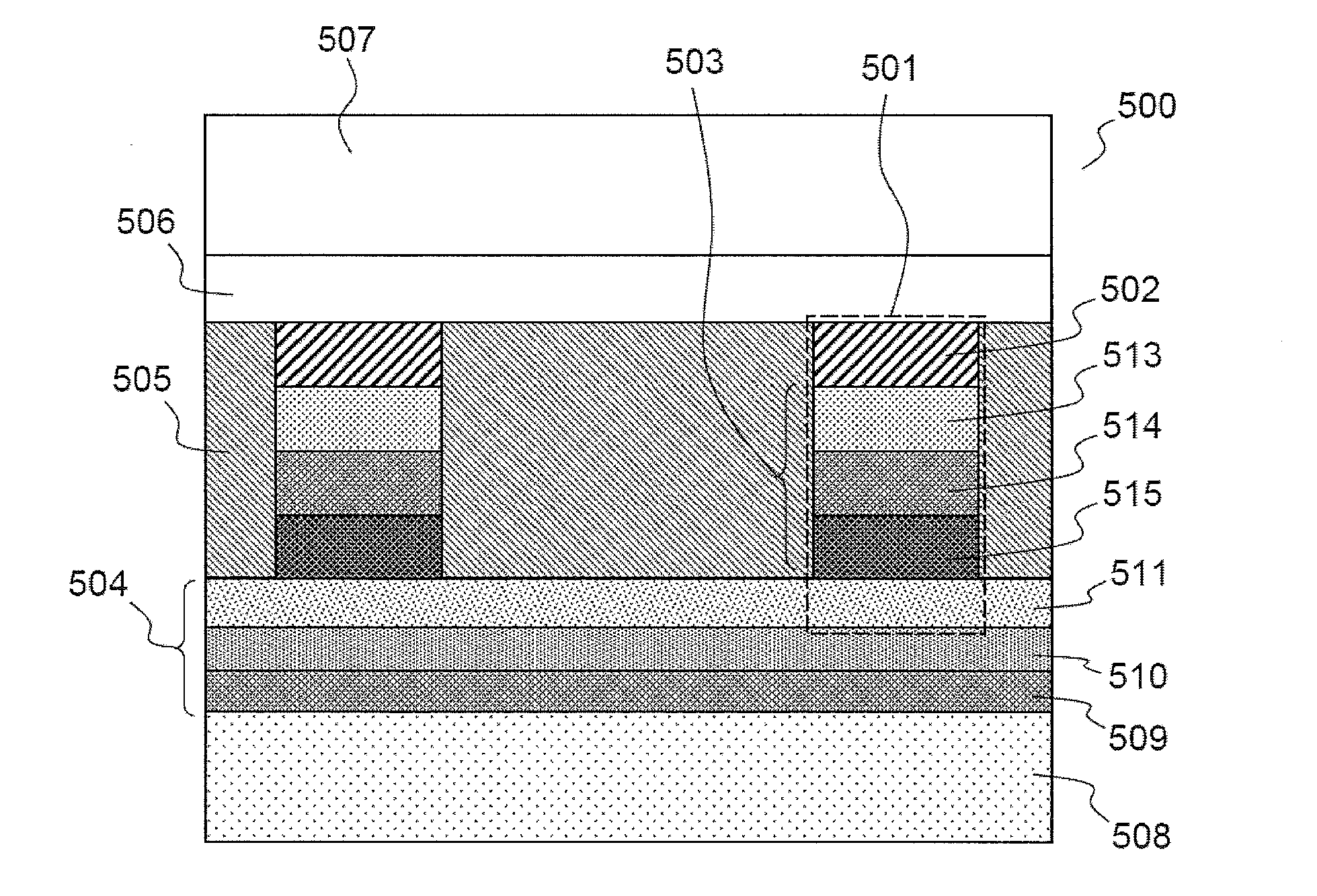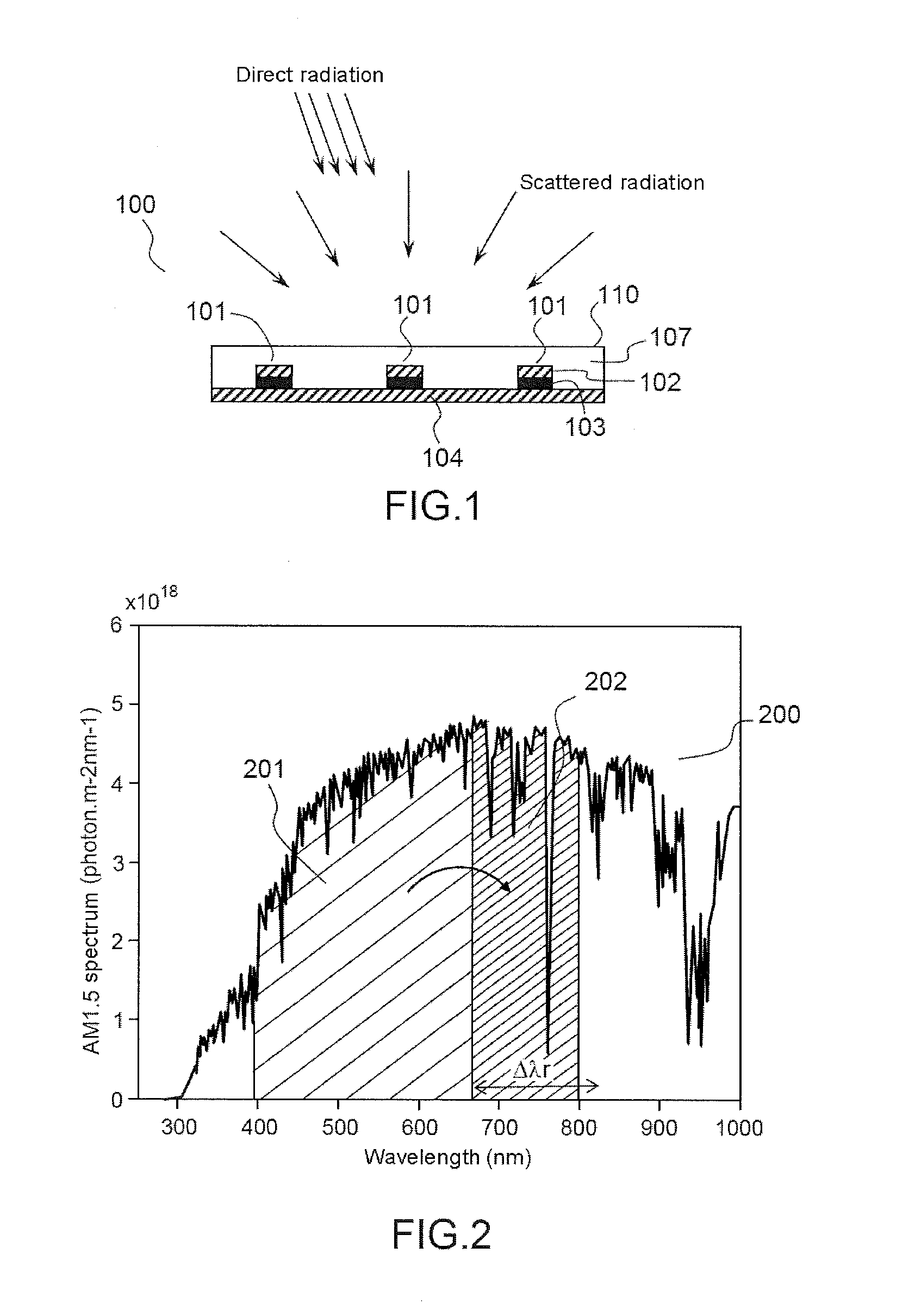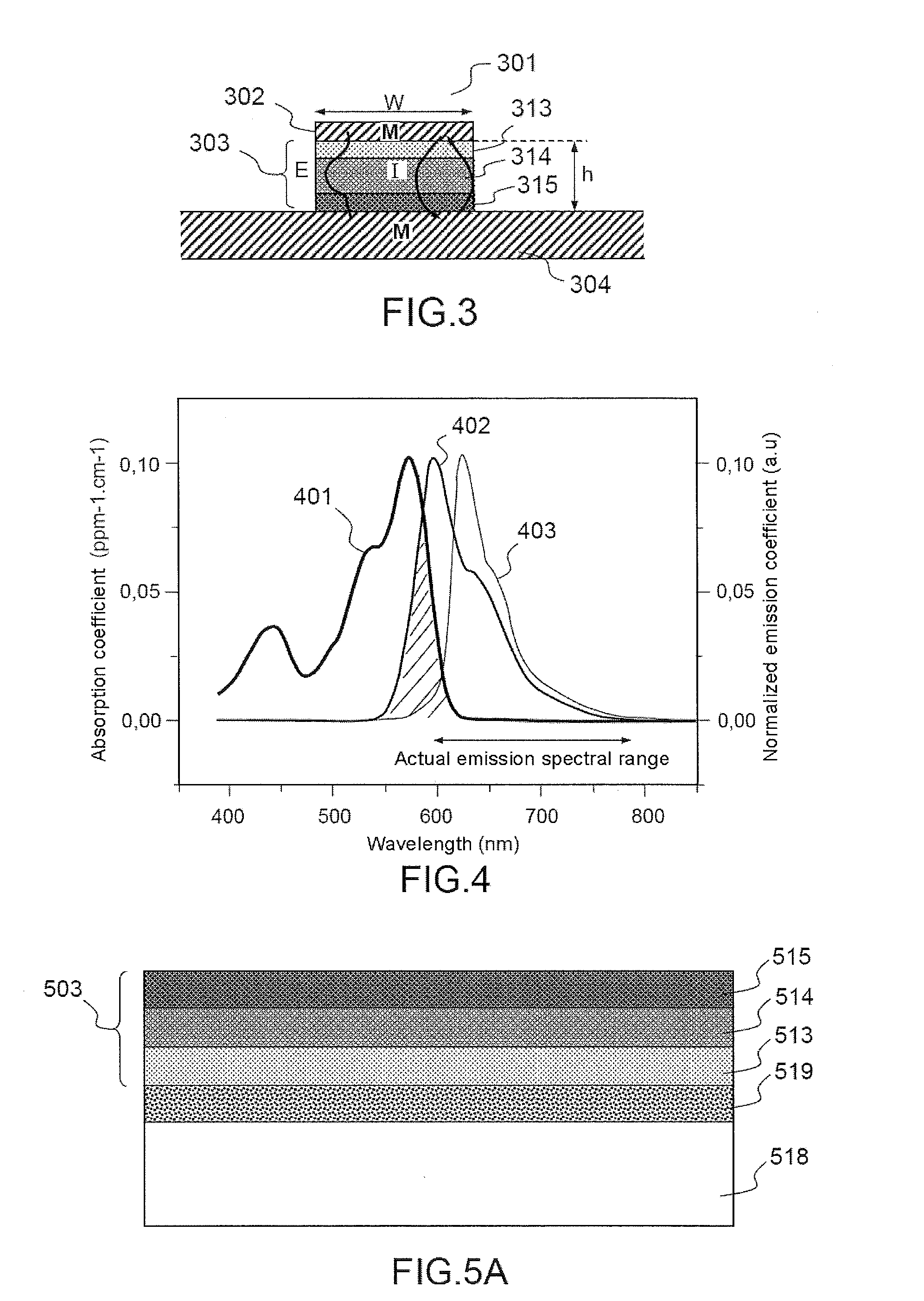Photovoltaic component with a high conversion efficiency
a photovoltaic component and high conversion efficiency technology, applied in the field of photovoltaic components, can solve the problems of scattered light (scattered by the atmosphere) being lost in these imaging systems, affecting the operation of photovoltaic devices, so as to achieve the wide range of solar spectrum useful to photovoltaic devices, and improve the absorption of the entire spectral band
- Summary
- Abstract
- Description
- Claims
- Application Information
AI Technical Summary
Benefits of technology
Problems solved by technology
Method used
Image
Examples
Embodiment Construction
[0041]FIGS. 1 and 2 illustrate, via a simplified schematic and a graph showing spectral absorption / emission bands superposed on the solar spectrum, respectively, the principle of the invention.
[0042]The photovoltaic component 100 schematically shown in FIG. 1 comprises, on its side intended to be exposed to the Sun, a spectral conversion layer 107 for converting all or some of the solar spectrum. The layer 107 comprises a spectral conversion material, for example a luminescent dye, allowing incident solar light to be absorbed and re-emitted isotropically in a spectral band shifted to longer wavelengths, and the width of which is much thinner than that of the solar radiation (typically a few tens to about a hundred nanometres in width). The spectral conversion layer therefore acts as a spectral concentrator. This spectral concentration is illustrated in FIG. 2, the curve 200 of which represents the solar spectrum (AM1.5 solar spectrum in units of numbers of photons / m2 / nm). The hatche...
PUM
 Login to View More
Login to View More Abstract
Description
Claims
Application Information
 Login to View More
Login to View More - R&D
- Intellectual Property
- Life Sciences
- Materials
- Tech Scout
- Unparalleled Data Quality
- Higher Quality Content
- 60% Fewer Hallucinations
Browse by: Latest US Patents, China's latest patents, Technical Efficacy Thesaurus, Application Domain, Technology Topic, Popular Technical Reports.
© 2025 PatSnap. All rights reserved.Legal|Privacy policy|Modern Slavery Act Transparency Statement|Sitemap|About US| Contact US: help@patsnap.com



